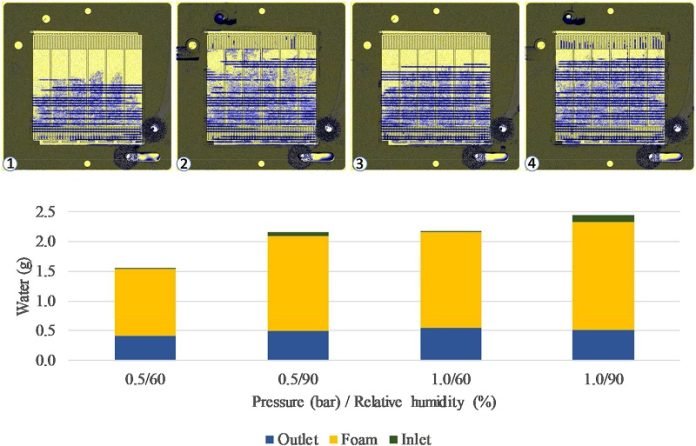
Scientists from the University of Seville and the Paul Scherrer Institute have made an exciting leap in energy technology.
Inspired by nature, specifically the human lung, they’re reshaping how fuel cells work.
They’ve shared their innovative ideas in two substantial research papers, published in the International Journal of Hydrogen Energies and Electrochimica Acta.
Fuel cells, particularly proton exchange membrane (PEM), are like advanced batteries. They generate electricity through a chemical reaction, using hydrogen as the primary fuel.
These clean and efficient cells make them a promising alternative to fossil fuels.
While PEM fuel cells are great, they face a significant challenge: managing water inside them. These cells need water to function, but too much water can block the channels through which protons and electrons move, reducing efficiency.
Too little water, on the other hand, can dry out the membrane crucial for the cell’s operation, hurting performance.
This is where the team’s lung-inspired design comes in. Like our lungs efficiently manage air flow, the researchers believe a similar design could help fuel cells better handle water.
By mimicking the structure of lungs, the newly designed channels inside the fuel cell could distribute water more evenly, preventing blockages and drying out.
Air is evenly distributed in our lungs through a network of tiny channels and sacs. The scientists at the University of Seville are applying a similar concept to fuel cells.
They’re designing flow channels within the cells to spread water evenly. This ensures that every part of the cell gets the right amount of water, maintaining optimal performance.
This nature-inspired design isn’t just about solving the water problem. It could significantly boost the efficiency and lifespan of PEM fuel cells. Better water management means the cells can work at their best for longer periods, making them more reliable and effective.
This innovative approach could be a game-changer in the world of renewable energy. Fuel cells are already a clean energy source, and improving their efficiency and durability makes them even more attractive.
This research paves the way for more sustainable and efficient energy systems, reducing our reliance on fossil fuels.
The research from the University of Seville and the Paul Scherrer Institute is a prime example of how looking to nature can inspire technological advancements.
By adopting a lung-like design for fuel cells, they’re tackling one of the biggest challenges in fuel cell technology. This could lead to more effective, long-lasting, and sustainable energy solutions, marking a significant step forward in our journey towards a greener future.



